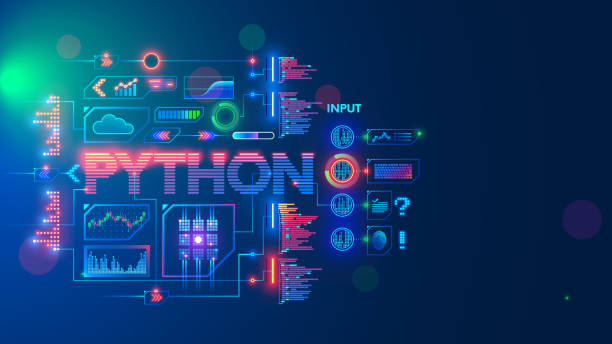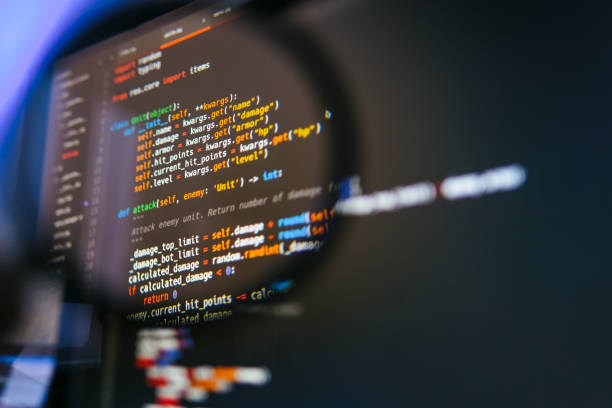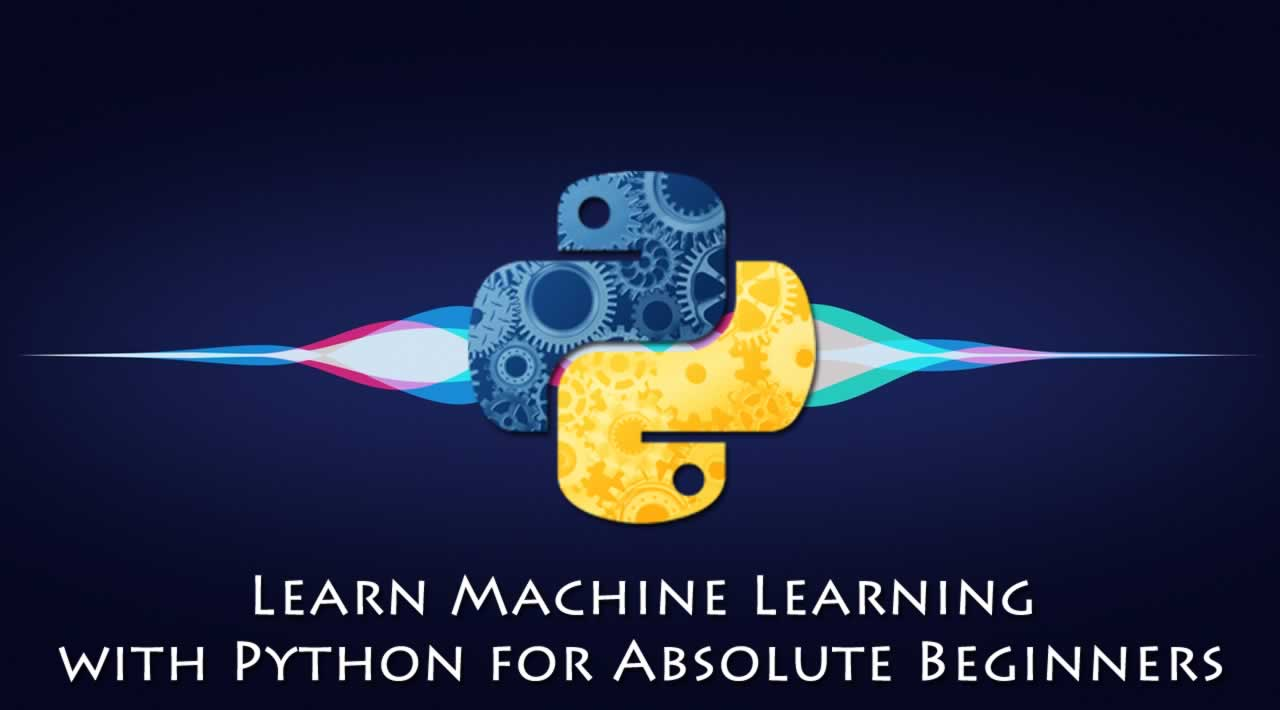Machine learning is a branch of computer science that uses statistical techniques to allow computers to learn from their mistakes and improve their performance.
Python for machine learning may still be in its infancy, but it has gained traction among developers and is now widely used. It's the study of how to program computers to learn and improve on their own. Thus, Machine Learning emphasises the power of computers by using data gathered from a wide range of observations.
The following lessons will show you how to use machine learning Python tools and frameworks to train your algorithms to spot patterns and extract information from data. Also, know how machine learning python tutorial will help you.
Acquiring Python, Setting It Up, and Launching SciPy
Immediate installation of Python and the SciPy platform is recommended. This should make sense to you immediately, especially if you have programming experience. These libraries may be installed on several platforms, including Windows, mac OS X, and Linux, by following the detailed instructions provided on the SciPy installation page.
Summarise the Information in the Dataset
We are at the stage where data analysis can begin. Multiple analyses, such as the ones below, will be performed on the data.
- There are several dimensions to the dataset.
- Investigate the bare numbers.
- Synthesis of all characteristics using statistical methods.
- Classifications have been made in the data.
Every time you look at the data, it counts as a command, so you don't have to worry. These are instructive instructions that might come in handy for future endeavours.

Visualising Data
We now have a solid grasp of the information that needs to be elaborated with an illustration of some kind. Now compare and contrast two very different types of narratives: Univariate graphs may help you better grasp each factor. The relationships between the different characteristics may be better understood using multivariate charts.
Measure the Effectiveness of a Few Algorithms
The next step is to create models based on the data and estimate how well they will perform on future data. The loaded dataset will be split in two, with one half set aside as a validation dataset and the other half used for training, evaluating, and selecting models. To do this, we will use 80% of the data set.
Speculate
We must choose the most suitable algorithm to use in our forecasts. Given the evidence, it seems likely that the SVM model produced the most reliable outcomes.
After constructing the model, we may evaluate it against the validation set to determine how well it performs.
This will provide a fair and definitive evaluation of the highest-performing model's accuracy. If you make a mistake during training, such as overfitting the training set or a data leak, having a validation set to fall back on will help you recover. There will be advantages to keeping this machine learning python tutorial on hand. The impact of these two issues together will lead to an excessively optimistic result.

Why Choose Python Machine Learning?
There are a few reasons why you should choose python machine learning. Some of them are listed below.
Flexibility
It's a fact that nobody likes to work on challenging things, and Python is the answer to that issue. This programming language is very flexible and efficient and may be used in tandem with others. It provides developers with the flexibility to use either scripting or OOP. In addition, it does not need to recompile the source code to view the effects of the modification. A secure environment where they can operate with less of an impact from errors and a user-friendly system might appeal to developers.
Python allows programmers to choose a particular programming style or combine many styles into a single application. The concepts of classes and objects are at the heart of object-oriented programming. The similarity between items allows us to group them into categories. Python may not support all object-oriented programming, but developers may still benefit much from it even if they can't use it in its purest form.
You solve issues in a procedural programming language by following a set procedure. Used in sequencing, modularisation, selection, and iteration processes.
Ease and Uniformity are Both Necessary
Python code is short and to the point. The fields of machine learning and artificial intelligence, which rely on complex algorithms, may benefit from Python's accessibility and reliability as a tool for building these systems. For the developer, this means less time spent fretting about language quirks and more time spent focusing on the problem of machine learning.
Low Learning Curve
One of the main reasons for Python's widespread adoption is its low learning curve. To top it all off, it's easier-to-understand nature makes it much more convenient to develop machine learning models. One of the many advantages of Python is that it is simple to learn and use in a team setting. Its general-purpose nature means that prototypes and products may be tested more rapidly than with other languages.

Freedom from Dependent Technology
Because of its binary nature, Python can run on various hardware and operating system configurations. This versatility makes Python an extremely popular programming language. The developer may write the code, build it, and run it on any number of platforms.
Python's flexibility and portability have contributed to its widespread adoption; the language can be used on various systems, including but not limited to Windows, Macintosh, and Unix. Python may easily be used with many other languages.
Community Support
As an open-source language, Python benefits from widespread community support. Python is an open-source programming language with extensive online resources for learning the language and getting started with its many useful modules and tools. Discussions and chitchats with other programmers in online forums might help them find solutions to their issues.
Many of the world's most successful companies utilise Python in their day-to-day operations, giving it the advantage of having strong corporate support. Keras, TensorFlow, and other Python libraries for machine learning have been created by Google, which is an interesting development.
Successful Data Visualisation
Regarding data science and machine learning, presentation matters a great deal. Getting the data in a human-readable format has proven to be challenging, but Python has been an invaluable tool in this endeavour. MatplotIib, one of many excellent Python packages for data visualisation, makes it a breeze to configure your data, settings, figures, and charting.
Recapitulation
Due to the industry's increasing focus on preparing for the future, data will play a vital role. Python has established itself in a position of importance owing to its numerous qualities, and it has overcome all other languages to become the language of choice for everyone. Expertise in AI and machine learning. Given the present pace of adoption, practical professionals have no choice but to educate themselves if they want to thrive in artificial intelligence and machine learning in the years to come.
Top 5 Machine Learning Python Books
There are plenty of machine-learning python book to choose from. Some of them are listed below.
Data Analysis using Python
This is the first Python book to concentrate only on data analysis and data science. This Python book will teach you all you need to know to become a Data Scientist or Data Engineer, including how to work with data aggregations and time series.
It also walks you through some basic Python jobs illustrating how to put Pandas to work in the real world. If you want to learn how to work with data in Python and get your feet wet with Pandas, this is the best book you can get your hands on.

Automate the Boring Things with Python
In addition to covering Python's essentials, this book provides easy-to-implement automation tips that will improve your day-to-day life. Those who make their living analysing large volumes of data, such as data scientists and business analysts, will find this very helpful.
Combining this course with, say, Jose Portilla's Python for Data Science and Machine Learning Bootcamp on Udemy would give you the best of both worlds. This course introduces Python with an emphasis on practical applications and exercises.
Python Machine Learning: A Collection
This is yet another Python book, except this one concentrates on Data Science, Machine Learning, and Deep Learning instead of the conventional Python themes. It starts with some basic ideas like linear regression and KNN and gradually advances to more complex ones like neural networks.
Like most other O'Reilly programming books, it is packed with well-explained, high-quality examples that help you put what you've learned into practice.
Combining this course with, say, Jose Portilla's Python for Data Science and Machine Learning Bootcamp on Udemy would give you the best of both worlds. This course introduces Python with an emphasis on practical applications and exercises.
Python Cookbook
It's another comprehensive Python book with plenty of information. Data scientists may find it useful to study Python. File I/O, data structures and much more are just a few of the core topics covered in this book. Each of these disciplines is essential preparation for any career in the information technology sector, including data science and machine learning. This comprehensive guide covers more than just Python's capabilities and fundamental programming concepts.
Machine Learning: Scikit-Learn and TensorFlow
If you're interested in learning more about TensorFlow, this book is one of the best Python books and is highly recommended.
Although the book's first half is mainly concerned with machine learning, the second half is devoted solely to neural networks. It also covers other crucial parts of deep learning using Tensorflow, such as convolutional neural networks, autoencoders, drop-out, and more.
Examples of Machine Learning With Python (Example Algorithms)
Here is a list of machine learning python example algorithms that you must know about-
Linearisation in Regression
Predicting a result based on an observation of continuous features is one of the most used techniques for Supervised Machine Learning in Python. It does this by picking a line that best fits the data, revealing the relationship between dependent and independent variables. A linear equation of the type Y=a*X+b describes the line with the best fit. The term "regression line" is also often used to describe this line.
Decision-Making Trees
Decision trees are built by repeatedly querying subsets of data. To ensure that the model always reflects the most current information about the dataset, the goal of the decision tree approach is to increase the predictiveness at each level of division.
Despite being a Supervised Machine Learning method, it is mostly used for classification rather than regression. The model begins with a single instance and repeatedly moves through the decision tree, stopping at each node to compare relevant attributes using a conditional statement.

Regression Analysis in the Logarithmic Framework
Python-based technique for supervised machine learning that can be used to predict binary values like 0/1, yes/no, and true/false. This is based on a variety of separate, potentially relevant elements. By fitting the data into a logistic curve or function, this method may forecast the probability that an event will occur. Because of this, the term "logistic regression" is occasionally used to describe it.
Support Vector Machines (SVM)
In Python, this is one of the most fundamental machine learning algorithms. Although it is often used for classification tasks, it may also be used for regression analysis. To visualise the data, each piece of information is represented as a point in an n-dimensional space, where n is the total number of features. The value of each feature corresponds to a particular location. The value of a feature is represented by its coordinate value.
The SVM is then used with a decision boundary to distinguish between the two groups. If, for instance, the dimensions of individual cells are used as a dividing line, then the data about those cells will be shown in a two-dimensional space, and a line will be used as the dividing line. If you use three criteria to make a call, the plane representing that boundary will exist in a three-dimensional space. Support vector machines (SVMs) excel in high-dimensional settings with fewer samples than dimensions.
Naive Bayes
When classifying data, the Naive Bayes approach is a kind of supervised machine learning. This feature is one of the reasons why it is often called a Naive Bayes Classifier. It is based on the assumption that the features in question have zero correlation with one another. These assumptions give rise to the term "naive" when used in this algorithm since they have no real basis.
As a result of rising expectations in the IT sector, machine learning has become more popular in recent years. An Organisation in many industries is interested in this topic since there is a great deal of opportunity to get value from data.















